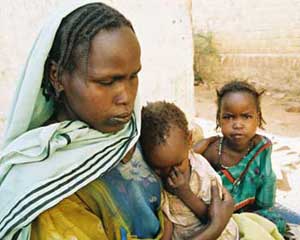2005 Large Scale Aid Pledged for Africa

Darfulr
On May 4, 2006, the Sudanese Government and the Sudan Liberation Army (SLA), the major rebel group in Darfur, signed a peace agreement. Sponsored by the African Union and supported by the U.S. and the EU, the deal called for an immediate ceasefire, Janjaweed militia disarmament, and rebel integration into national forces. However, two smaller rebel groups did not sign, raising questions about the agreement's efficacy.
On May 4, 2006, a significant peace agreement was reached between the Government of Sudan and the Sudan Liberation Army (SLA), the largest rebel group operating in the Darfur region. The agreement was the outcome of a peace conference sponsored by the African Union, with assistance from the United States and the European Union.
Key Provisions
The agreement had multiple key components designed to bring an end to the hostilities and pave the way for lasting peace in the region:
-
Immediate Ceasefire: The first major point was the establishment of an immediate ceasefire, aiming to halt further violence and loss of life.
-
Disarmament of Janjaweed: The agreement stipulated the disarmament of the Janjaweed militias, armed groups accused of committing atrocities against civilians and largely seen as having government backing.
-
Integration into National Forces: The deal also called for the integration of the rebel militias, including the SLA, into the Sudanese army and police force as part of the broader effort to stabilize the region.
-
Local Governance: The rebels were to receive the majority of the seats in local assemblies, providing them with a say in the governance of the areas they controlled.
-
Representation in National Assembly: Another significant point was the guarantee that the rebels would have representation in Sudan's National Assembly, ensuring their involvement in national politics.
-
Financial Aid for Rehabilitation: The agreement promised financial assistance to help rehabilitate the war-torn region, covering aspects such as infrastructure development and social services.
Limitations and Challenges
However, the agreement had its limitations:
-
Non-Signatories: Two smaller rebel groups, notably the Justice and Equality Movement (JEM), did not initially sign the agreement. This raised questions about the deal's comprehensiveness and long-term efficacy.
-
Implementation Issues: Even after the signing of the peace agreement, the practicalities of implementation, including disarmament and integration of rebel forces into national institutions, posed significant challenges.
-
Persistent Violence: Despite the agreement, violence did not entirely cease, and allegations of breaches were made by both sides.
-
Humanitarian Crisis: The humanitarian issues in Darfur, including displacement and poverty, remained largely unaddressed immediately after the agreement.
 >
>